When I’m asked about minimalist trail shoes, the first brand that springs to mind is Xero Shoes. In my opinion, they make some of the best barefoot trail options on the market right now. And currently, the two shoes I suggest the most are the Scrambler Low and the Mesa Trail II.
Both trail shoes are suited to very different situations, and they’re both in my shoe rotation daily.
In this post, I’ll outline the key differences between the two shoes and tell you which model to go for and when. And in the end, the decision may end up being both of them, like me!
Affiliate Disclosure: By clicking through the links on this page and purchasing the products, you’ll be helping me out. This is done because I receive a kickback from the sellers at no extra cost to you! Thank you so much for supporting us!
Mesa Trail II
Type: Trail
Width: Average
Stack height: ~5 mm + 3.5mm lugs + 3.5mm removable insole
Weight: 8.2oz / 232g
Best trail shoe for ground feel and protection. Read the full Review
Scrambler Low
Type: Trail
Width: Average
Stack height: ~8 mm + 3.5mm lugs + 3.5mm removable insole
Weight: 9.3oz / 264g
The best protection mixed with a little barefoot feel. Read the full Review
The Scrambler Low and the Mesa Trail II are both Xero Shoes models, so they fit similarly. It’s that deep, semi-wide toe box, you know…. And maybe love, depending on your foot shape.
Both shoes fit true to size! Xero Shoes sizing varies from model to model, often making it tricky to select the correct size! But I’d advise sticking to your standard size for the best fit. However, a small minority may choose to ½ size up to gain more toe box room, especially around the big toe.

Xero Shoes toe boxes are wider than conventional brands but not as wide as other barefoot brands! This is a shape that Xero Shoes are known for. The toe box is wide enough for most. But if you’ve got fan-shaped feet, you may want to look at Vivobarefoot or Lems instead. I’d estimate 70-80% of people will fit perfectly in Xero Shoes. In a perfect world, I’d ask Xero Shoes to square off the big toe area, and the toe box would be amazing.
The Mesa Trail II’s are high volume, especially when you take the insoles out. Meaning you’ll never scrape your toes on the top of the toe box, and you’ll have to tie them down tight to get a good lockdown. This is mostly true for the Scrambler Low’s, too, but I found them a tiny bit more snug over the top of the foot. If you know you have shallow feet or you’ve had a bunching of material over the top of shoes in the past, I’d suggest looking at Vivobarefoot or Altra’s instead.
Which minimal running shoe is for you?
Take a quick 5-question quiz to identify the perfect minimal running shoe for your feet! You'll get both road and trail options based on your answers!
There’s plenty of room in the heel of both shoes. With no supportive heel cup (a good thing) and the flexible material, the heel and ankle are accommodating in both models. Great for those who find conventional shoes tight around the ankles or have an issue with sitting too high in a shoe.
The lockdown in the Mesa Trail II is a tiny bit better than the Scrambler Low. And most of that comes down to the flexible material used in the Scrambler Low. It may be super comfortable, but it doesn’t lock down like the Mesa Trail II. I’d suggest a lace lock on both models to keep your feet firm in place.
If the Mesa Trail II and Scrambler Low fit very similarly, what’s the big difference?
It’s the feel!
These are two very different shoes. One is low to the ground, where you feel every pebble, and the other is higher stacked, offering a ton more protection.
The Mesa Trail II offers a perfect balance between ground feel and rock protection. Well…. For some of us. This is a minimal shoe! And if you take the insole out, you get a ton of ground feel! That’s awesome when working on your barefoot stride, but when you’re tackling the rocks in the mountains, you have to choose your footing very carefully!
The Scrambler Low leans towards protection but still has a barefoot heritage. When comparing the Scrambler Low to the Mesa, you’d almost say it’s a conventional shoe. Yes, the forefoot flexes, and you can twist it slightly, but the heel is pretty solid. But for aggressive rocky trails, that’s what you want. Getting a bruised heel from one misstep is frustrating (trust me, I’ve done it), and that’s what you risk when you go too minimal with trail shoes.

What conditions and terrain is the Mesa Trail II suited to?
To be honest. I use my Mesa Trail II’s everywhere. Sandy, rock, mud…. Road (but not advised). But that doesn’t mean they work perfectly in all those conditions.
I suggest using the Mesa Trail II on softer, sandy trails or moderately muddy ones.
If you encounter sharp, rocky terrain, you should probably reach for some higher-stacked shoes unless you’re going to be SUPER careful with your foot placement.
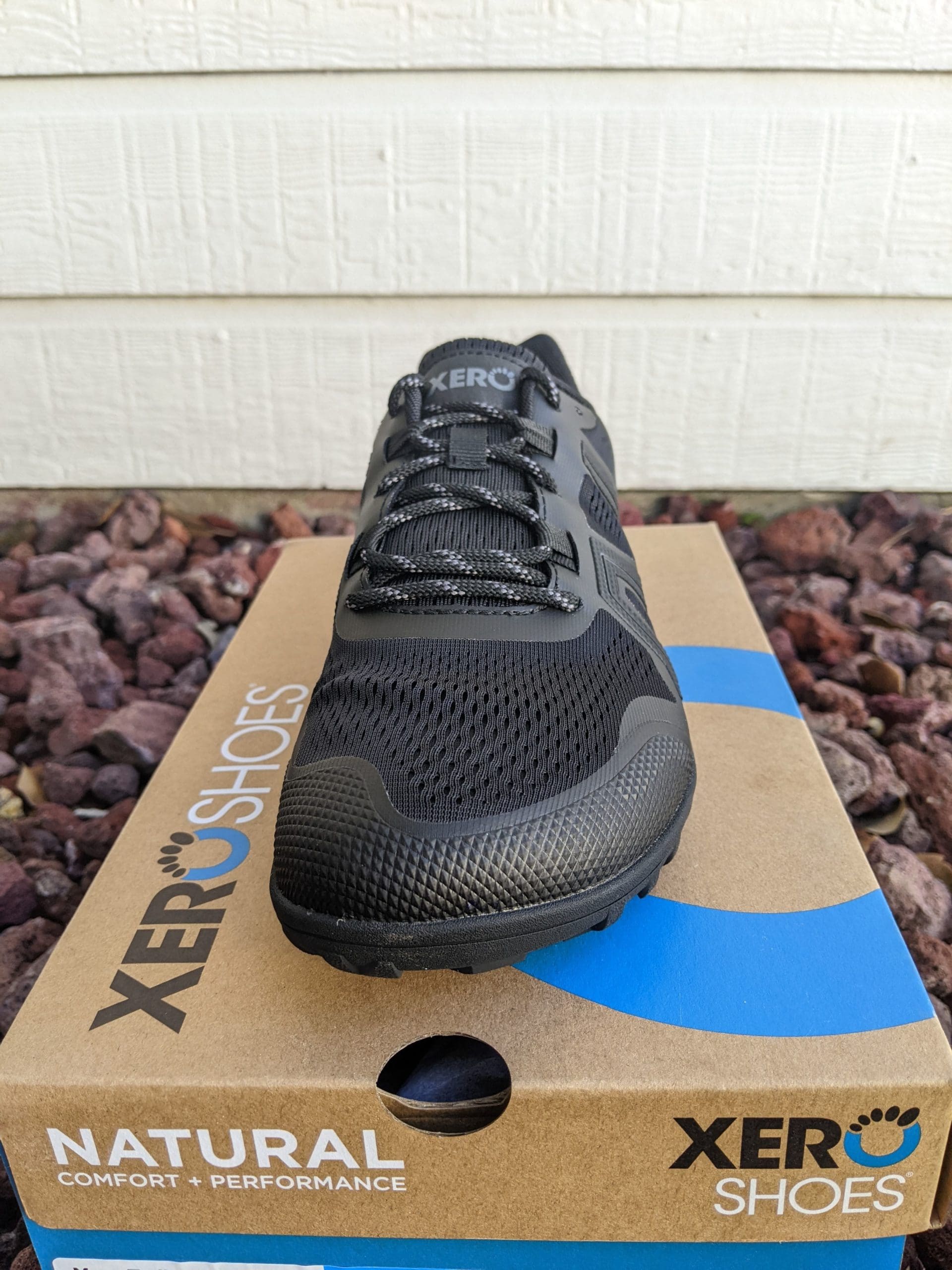
What conditions and terrain is the Scrambler Low suited to?
Again, these shoes could work in most conditions, but we’re talking about the perfect situation for these shoes.
I suggest using the Scrambler on aggressive rocky terrain or sloppy muddy conditions.
The Michelin outsole is made for muddy conditions, achieving good grip and clearing mud well, too.
But it can also work in rocky conditions because of the slightly higher stack height. But be warned, when the rocks get a little wet, things tend to get a little slippy.
What distances would the Mesa Trail II be suited to?
Any distance! It all depends on you and your feet/legs!
That’s right, I’ve blasted a 50km race in these minimal shoes and survived to tell the tale.
But I wouldn’t suggest everyone go out there and run 50km in these. The minimal nature will put significant strain on your feet and lower legs, and you must do a lot of training to build resilience to withstand such extremes.
For most out there doing “normal” 5-20km distances. The Mesa Trail II is excellent. Just remember to build the distance slowly.

What distances would the Scrambler be suited to?
Again, any distance. And again, just build the distance slowly because these are still minimal compared to conventional shoes.
I’ve taken this model to 100km race, and while it was tough. The shoes held up amazingly.
The Scrambler Low is a perfect option for a minimal/barefoot runner who wants to up their distance or add a little extra protection for those extreme trails.
There are pros and cons to both models. And while they’re not the most durable shoes on the market, they’re better than the industry standard.
Both shoes have welded overlays around the joining of the upper to the sole. For me, this is essential for any shoe now. Too often have I seen my feet and others ripping out the side of shoes where the material meets the outsole. This is especially true in trail shoes because we put heavy lateral pressure on the shoe’s upper. I wouldn’t say one model is better than the other; they’re both decent!
The upper materials are different, and I can see weak points in both models. The Mesa Trail II has a thin, lightweight mesh. There are a lot of positives with this material, such as breathability, brilliant drainage, and quick drying. But that does mean it’s a material that could break down quickly, especially if you happen to scuff the shoes too much or catch them on a branch.
The Scrambler Low’s upper material is entirely different, but it suffers from similar downfalls. The chunky mesh material exposes wide-open holes that could catch easily on branches and bushes. Another negative point is the shoe’s weight when you traverse through water. The chunky fabric acts like a sponge and takes a while to dry out.
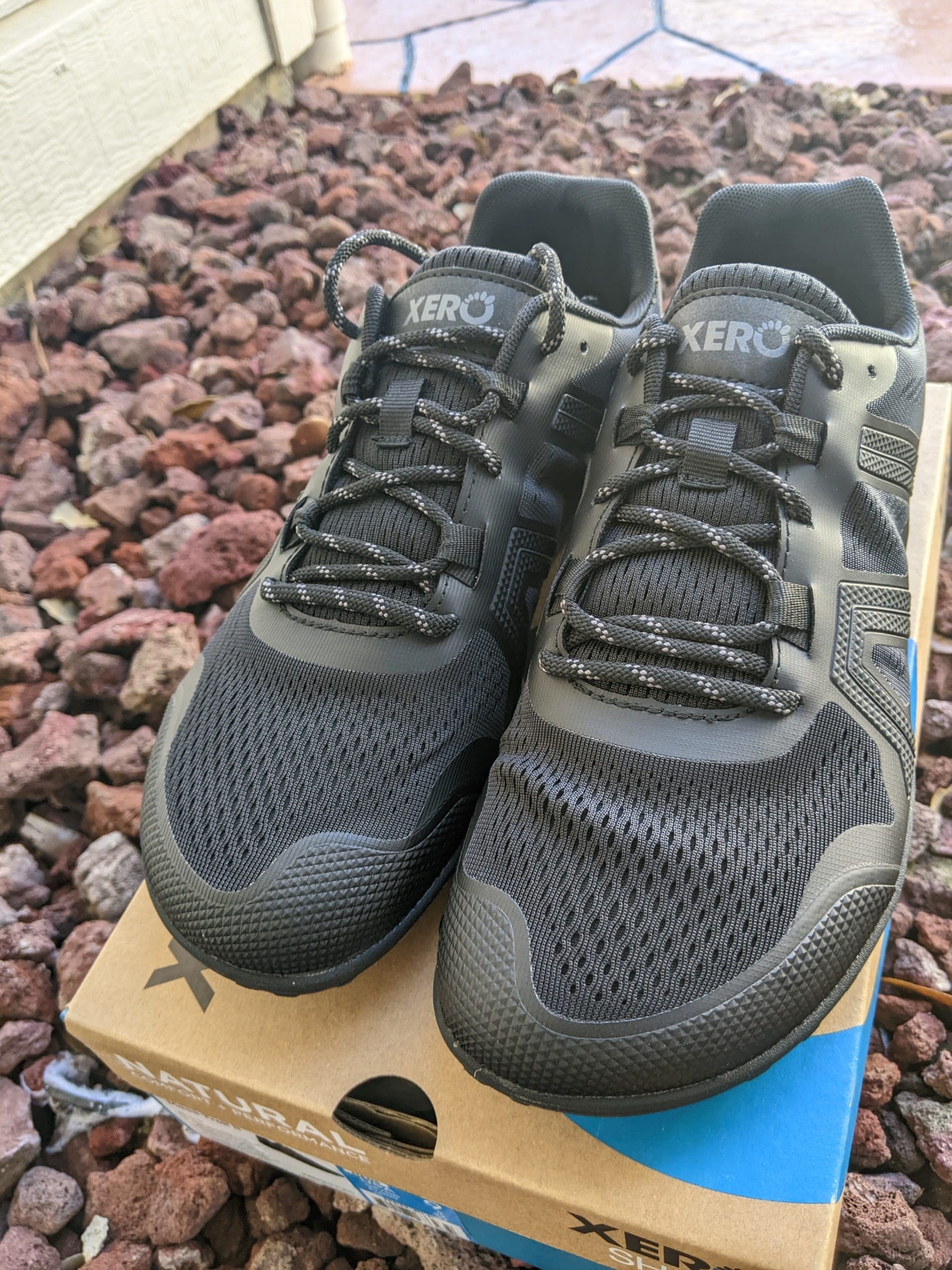
The outsoles are the biggest differentiator
Scrambler Low – Michelin rubber with a bike-inspired tread pattern
Mesa Trail II – Softer tacky rubber with shallow lugs
I do not doubt that the Scrambler Low outsole will last 5x longer than the Mesa Trail II. However, the thinner lugs on the Scrambler Low mean it will wear quickly if you take them on the road too much.
The Mesa Trail II can suffer premature wear if you take the shoes in extreme conditions. The softer rubber is excellent because it’s tacky and sticks to rocks well, but it’s prone to slicing from sharp rocks. I did notice this early on in the shoe’s life, but I continued running in them and now have them at 500km. Whereas the tread is now well worn, I’m still taking them into the mountains on drier days.
For me, the choice between the Mesa Trail II and the Scrambler Low is simple.
Both of them. Just for different purposes.
But if you have to choose between the two, it comes down to two simple points.
How minimal do you want your trail shoes to be?
- Super minimal: Xero Shoes Mesa Trail II
- Some protection: Xero Shoes Scrambler Low
What conditions do you run in the most?
- Wet, muddy, or rocky terrain: Xero Shoes Scrambler Low
- Dry, mellow trails: Xero Shoes Mesa Trail II
If I were to pick one shoe, it would be the Xero Shoes Mesa Trail, purely for the fantastic ground feel. But you have to decide if your feet are accustomed to the abuse.
To read more about these two shoes, check out the full reviews below.
Read the full Xero Shoes Mesa Trail II Review
Read the full Xero Shoes Scrambler Low
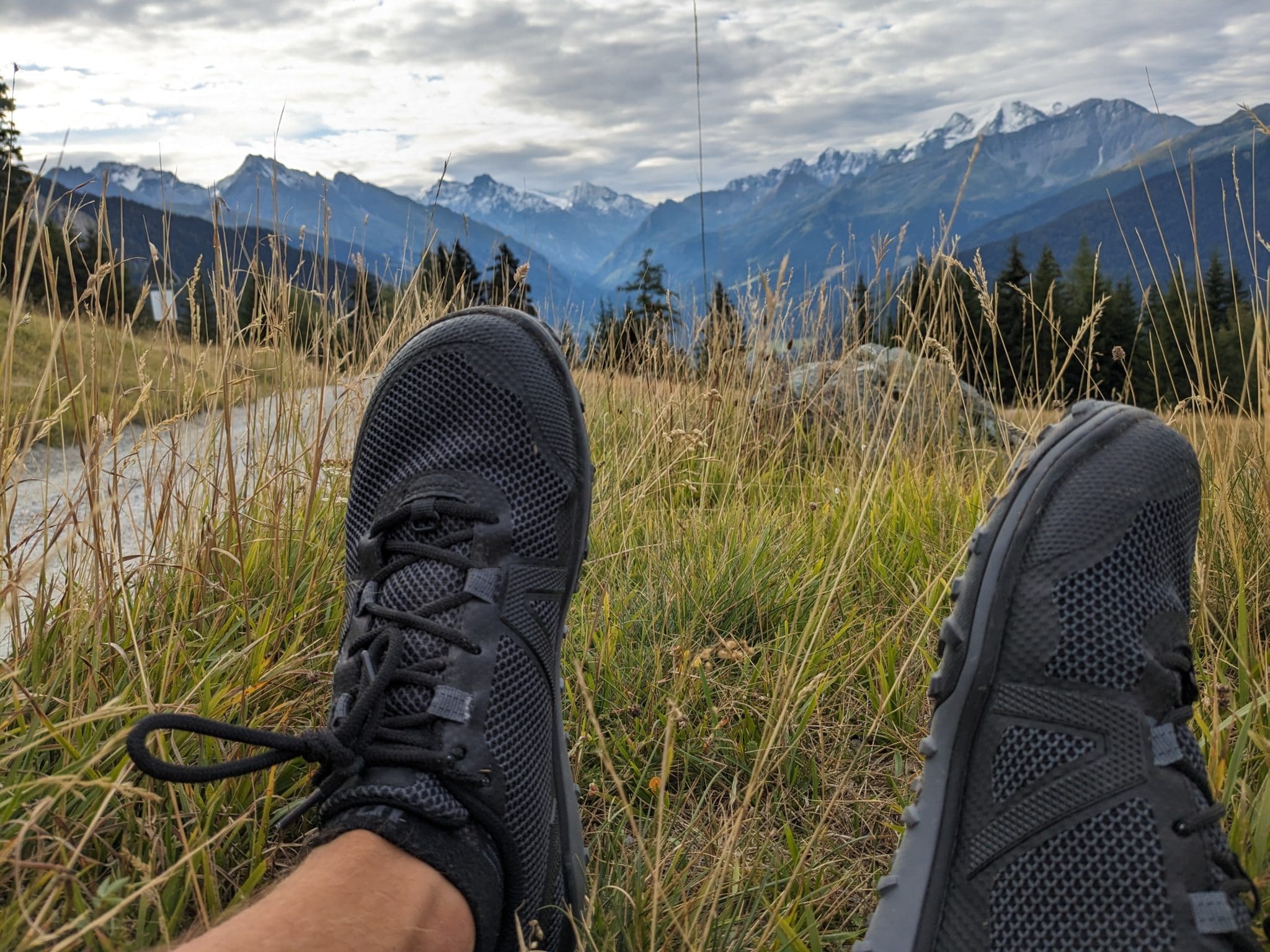
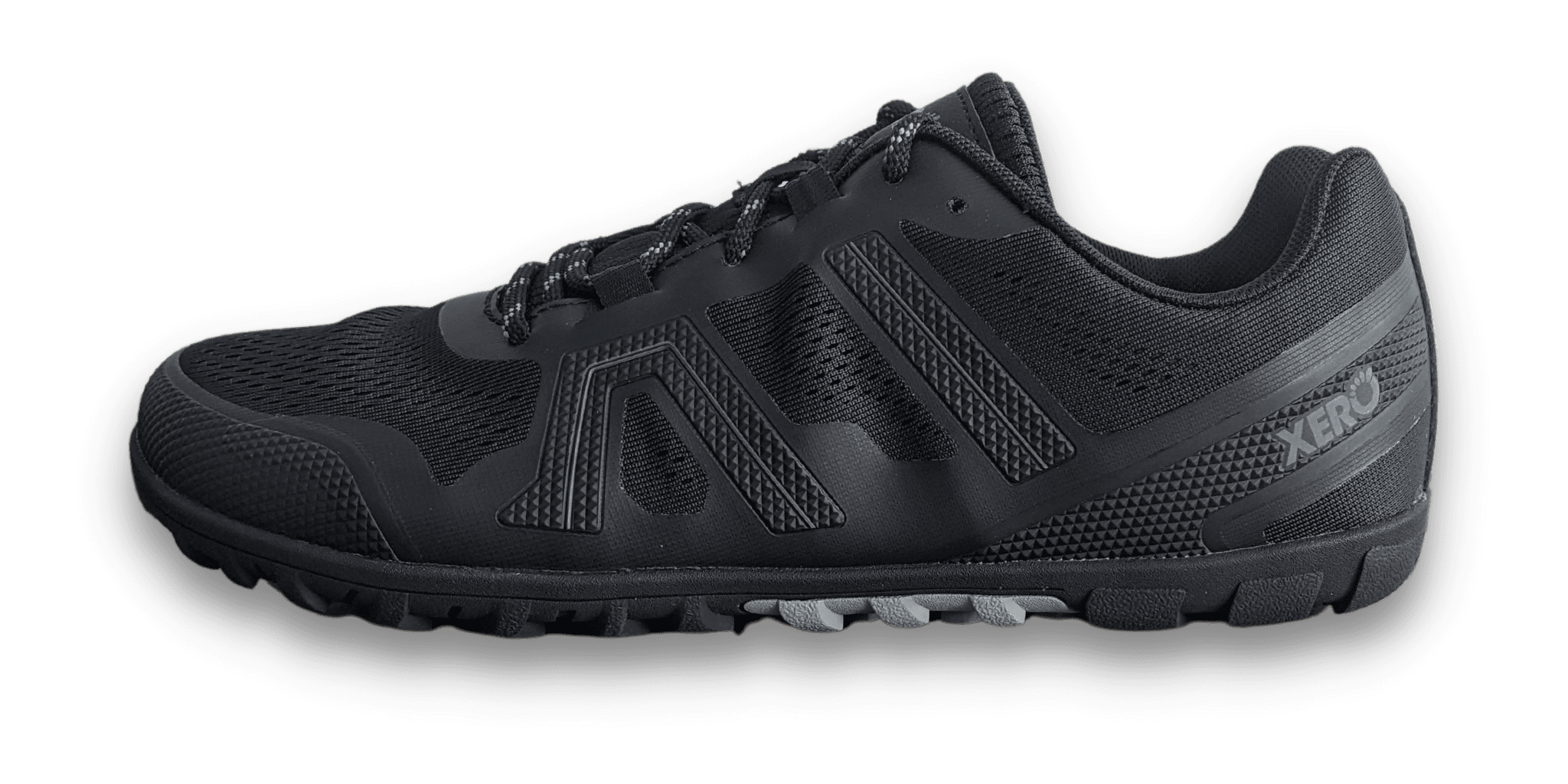
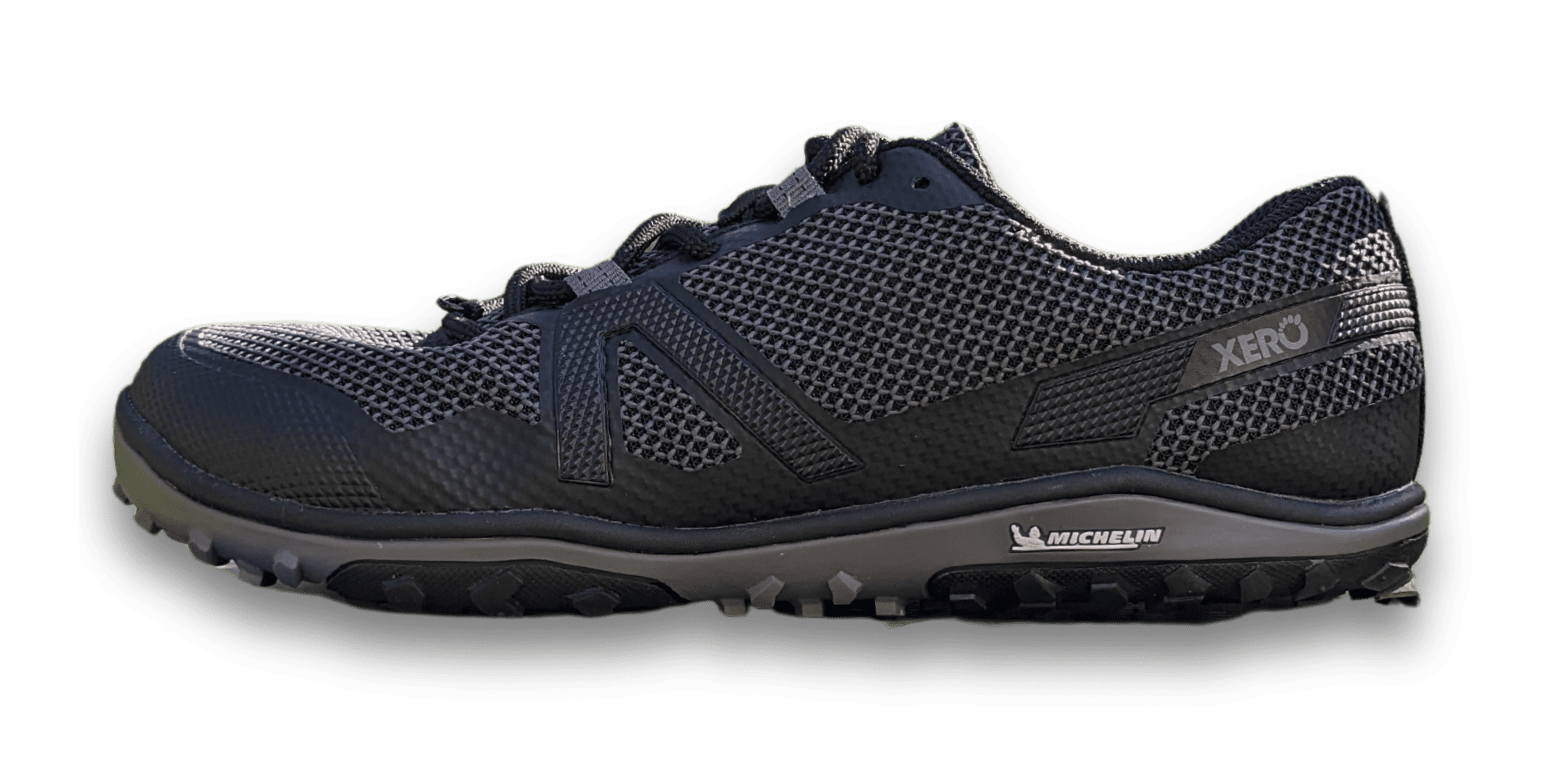
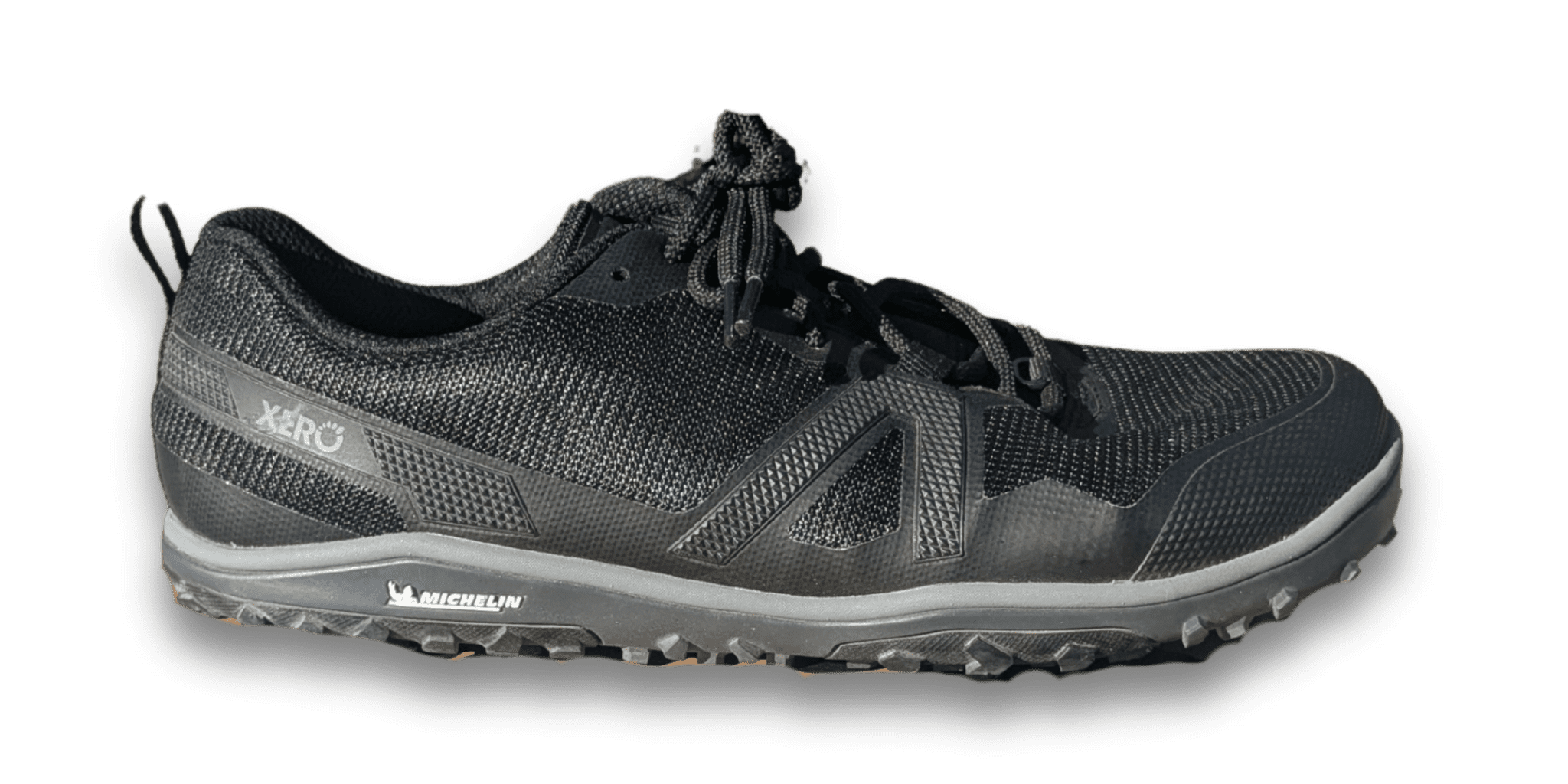
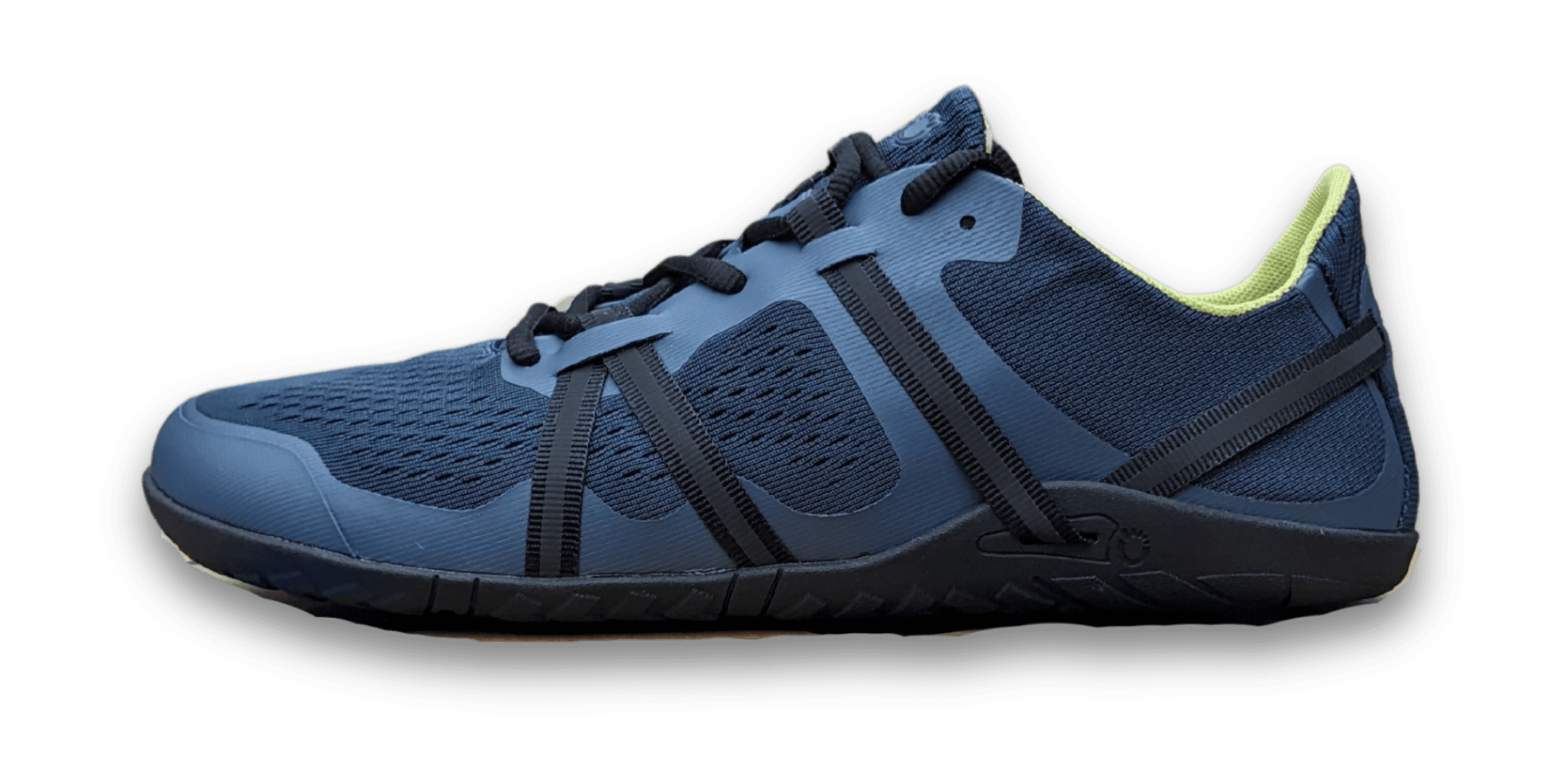
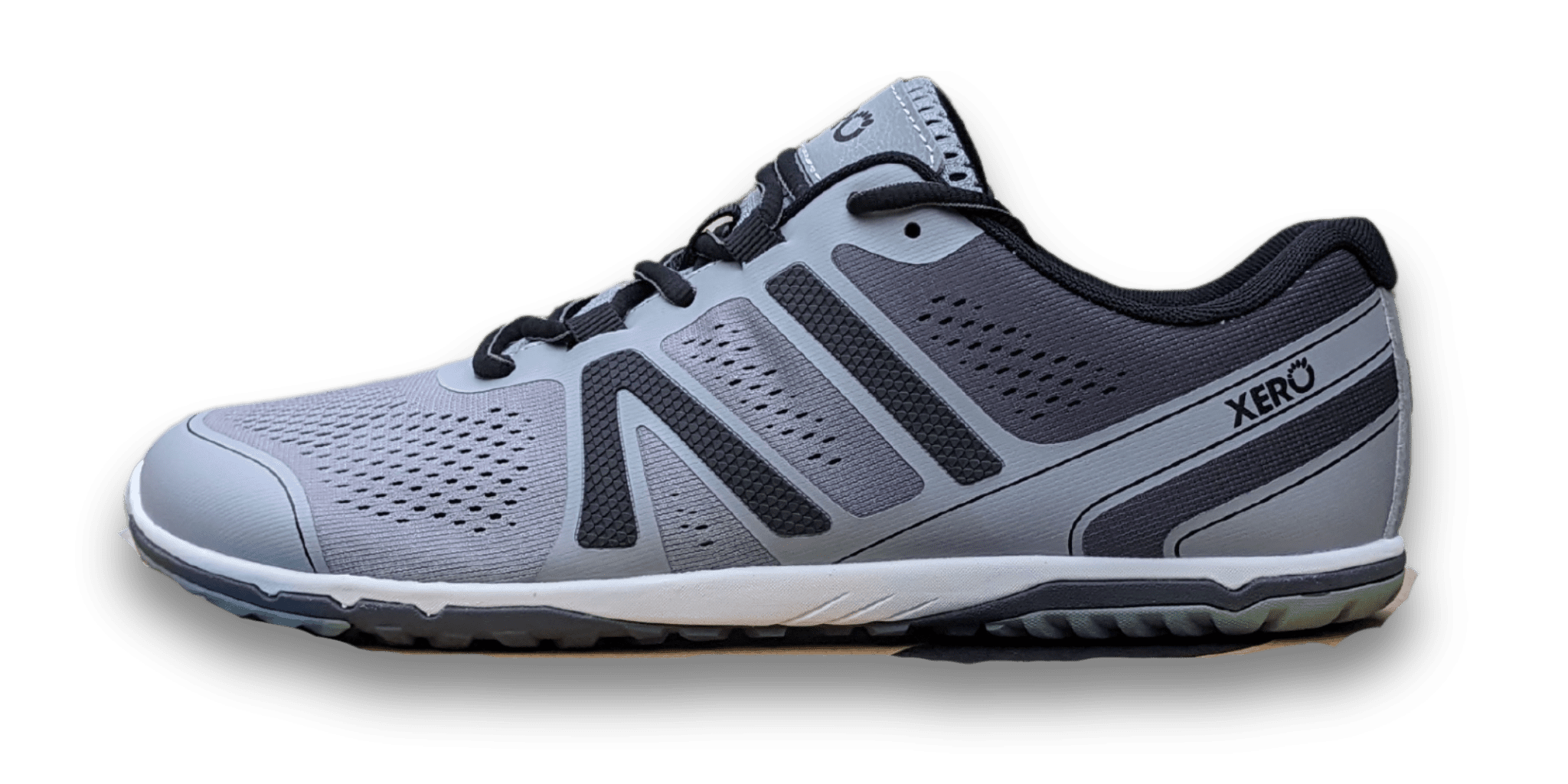

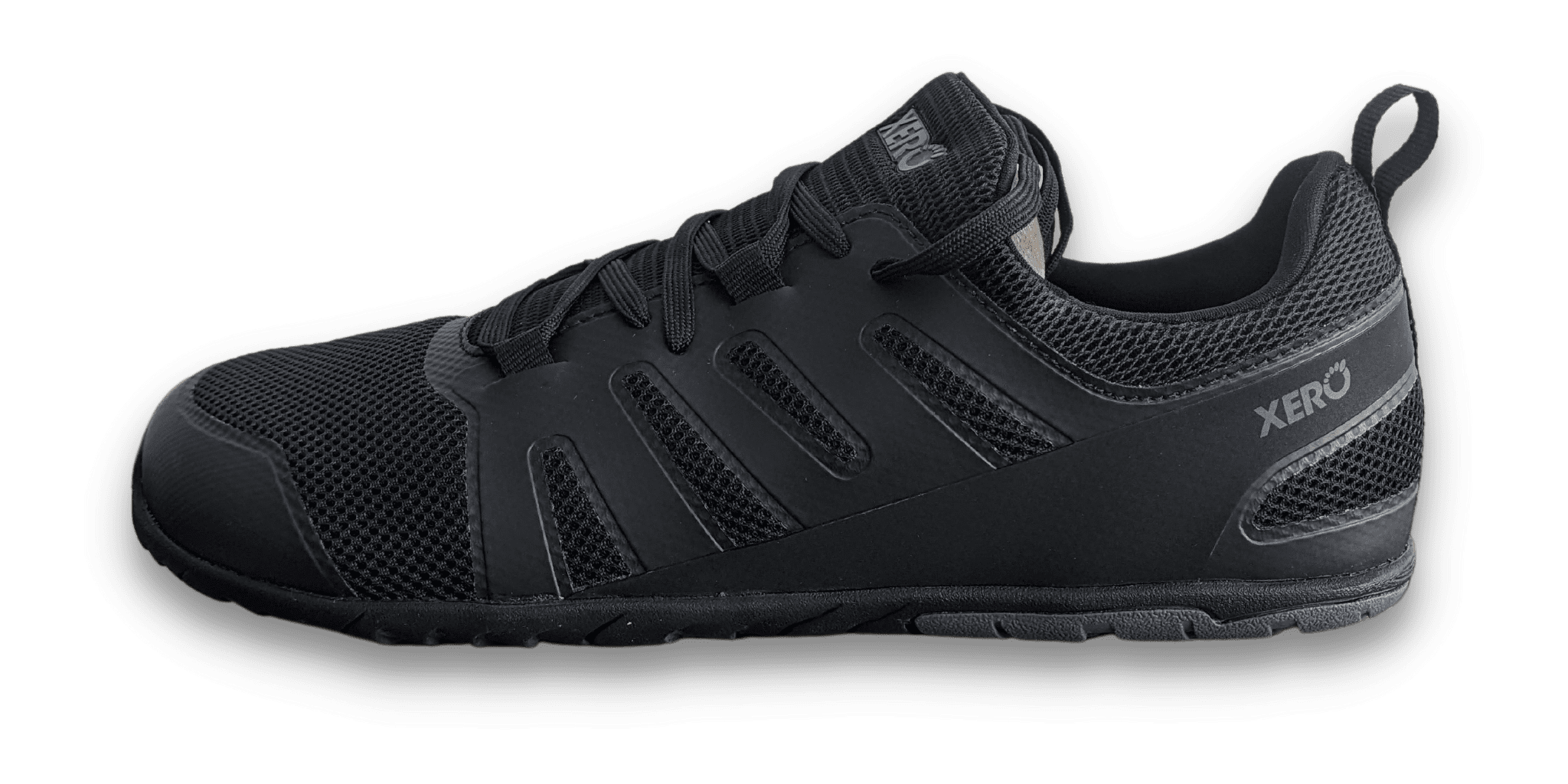

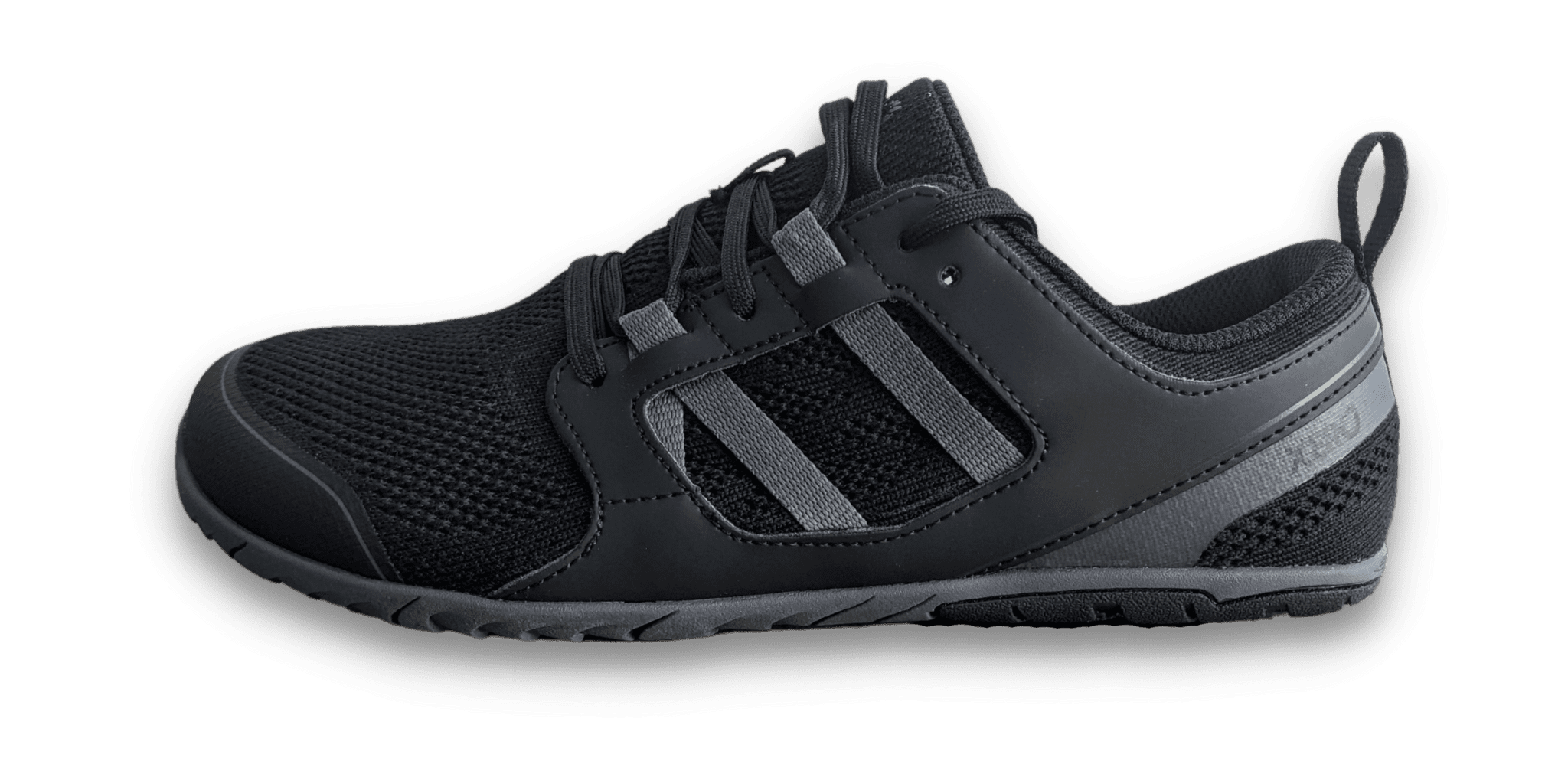
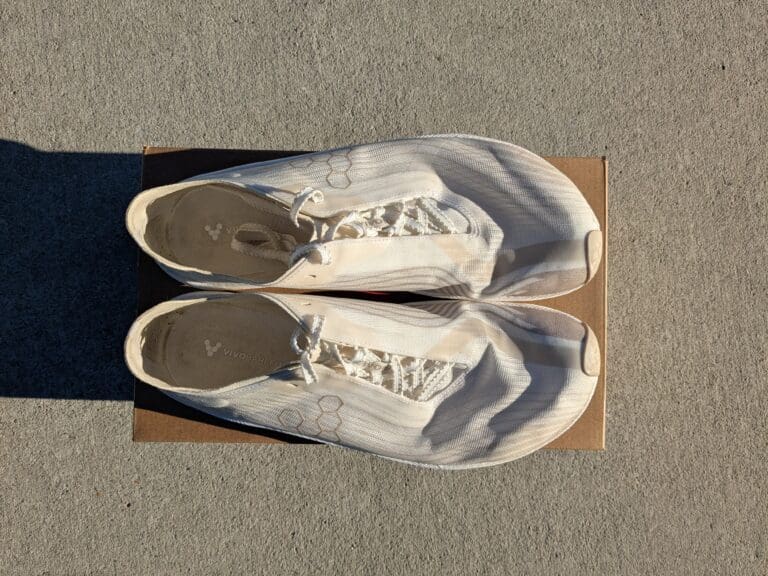
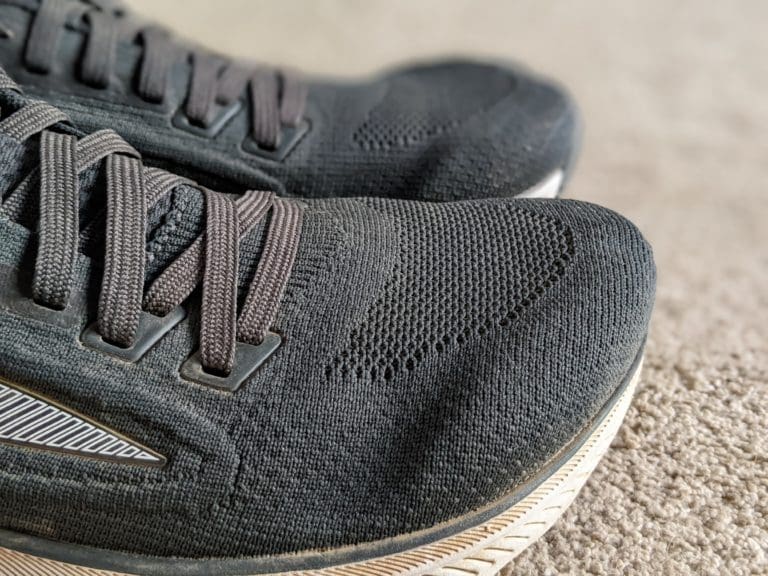
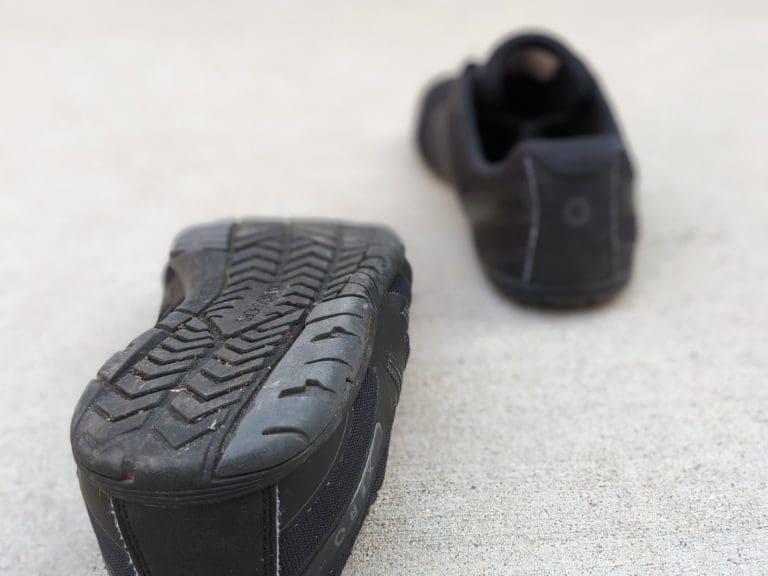
Thank you for the excellent review Nick. I have been wearing barefoot shoes for the last two years and been using Mesa Trail I and II for trail running. It’s been raining almost everyday in Jakarta (I am from Indonesia) and I slipped a few times using Mesa Trail while my sister ran just fine using Salomon Speedcross. I’ve been looking for barefoot trail shoes for wet trails and now I’m considering Scrambler Low after reading your review. Besides Scrambler Low, do you have any recommendations for wet muddy trails?
Thanks for the kind words!
And that all makes sense. The speedcross is very aggressive in comparison.
The Scrambler Low could be a good alternative because it is more aggressive, although you have to note that it’s not as minimal as the Mesa Trail II. It’s all a trade off.
The only other option I could think of would the Vivobarefoot Primus Trail SG (soft ground). That’s made for the wet muddy fells in the UK so it has bigger lugs. The fit is not as deep as the Xero Shoes, so you’ll have to work out if it’d fit your foot first.
I hope that helps!